Finding Lost Voices: These Deeds Were Done By Women: An Interview with J.J. Wilson, one of the founders of The Sitting Room
A weekly email that brings back the voices of those who have been forgotten or misremembered.
Dux Femina Facti — These deeds were done by women.
from the Aeneid Book 1
This week, I will introduce you to one of my mentors, the amazing Virginia Woolf scholar and feminist Activist J.J. Wilson, and to one of the places that helped me become the scholar I am today. Wilson lives in a beautiful house near Penngrove, CA, that is sheltered by a grove of trees. Her house is also home to a library that’s dedicated to women writers. The library is called The Sitting Room, and it's a place that has been fundamental on my path toward becoming a writer and learning how to be a feminist who makes a change in this world.
The Sitting Room library was established in 1981 by Wilson, June Farver, Jane Flood, Marylou Hadditt, Susan Miller, Karen Petersen, and D.A. Powell to give more access to books by and about women. The space was modeled after the Morrison Reading Room at UC Berkeley as a space where one could find books and a comfortable environment in which to read them. Indeed, walking into the Sitting Room today is like walking into a state of refuge. The walls are teeming with books. There is tea (and often cookies). The Poetry Room (where I like to sit and do work) houses floor-to-ceiling bookcases filled with women poets and archives featuring materials about 270+ women writers. And in the summer months, one finds J.J. Wilson in residence, often at the dining room table, offering conversation and inspiration.
Over the past forty-three years, The Sitting Room’s library has grown from just 52 books to over 7,000 titles. The team of volunteers, interns and Board members has also grown exponentially. Wilson and I sat down first over tea at the Sitting Room (where we were often interrupted by visitors and side conversations about the books surrounding us). We continued our conversation over email and phone.
Iris: Can you tell me a little bit about yourself?
J.J.: Celebrating my 88th birthday recently, I am so darn glad I got to live this long and see many of my lifelong (fun to use that word in this context) goals/issues/projects/concerns coming to fruition. I have learned much more from jobs and from reading on my own than I ever did in school (which makes it odd that I ended up teaching for a living…)
I attended Stanford way too young, majored in French and political science (both of which have been quite useful), and then worked as a secretary, which is what we women graduates with distinction did in the l950s. While working at The Bank of America and supplementing my $250 a month salary by baking cheesecakes and tutoring French, I went to a night class in so-called creative writing at SF State where the wonderful Dr. Foff wrote a note on my final rather plodding portfolio suggesting that I read some Virginia Woolf so that I could “see that prose could be winged too” – at the time, it was hard to find Woolf’s books as they were out of print, but I got a used copy of Jacob’s Room & The Waves bound together at The Discovery Bookstore in North Beach. Reading Woolf reminded me of how I saw the world as a child. I perceived the world with a kind of freshness that I had lost while working at the Bank of America.
That highly charged reading experience led me to grad school at U.C. Berkeley, leading me to the very new Comparative Literature program. After passing my orals, I went off to teach full time at Smith College in Massachusetts; teaching at a women’s college before the new wave of Feminism was weird (too long to talk about here), and my then husband was determined to stay in California and continue his Zen study, so I came back to finish up writing my PhD thesis on guess who? Virginia Woolf.
During that time, I was lucky enough to get a part-time job as an adjunct at the very new Sonoma State College (as it was then), and after a decent interval, I was fortunate to score a full-time position at Sonoma State.
Iris: That’s fascinating, J.J. I’m so glad Dr. Foff suggested you read some of Woolf’s “winged” prose! When did you first identify as a feminist?
J.J.: Maybe it was when I was being interviewed for a job teaching at the Univ. of North Carolina in the early 1960s, and one of the six male interviewers mentioned that they had no female faculty in the English Dept. “oh, except for one, and she is in creative writing and so that doesn’t count.” That’s when I realized that I wanted to join all of the No-accounters.
Iris: The Sitting Room has been important for me as a writer. It gave me a place to go and write (and identify as a writer) when I had small children (therefore no time or privacy) and felt disconnected from my writerly/scholarly self. Can you tell us a little bit about the history of the Sitting Room? How did it get founded?
Oh, how did TSRL get founded? With the money that Karen Petersen and I made off the book and the slide sets we published called Women Artists: Recognition and Reappraisal from the Early Middle Ages to the 20th Century (Harper and Row, 1976.) It was quite successful and we were often invited to lecture on the discoveries or recoveries featured in the book. Whenever we gave presentations, everyone would ask how they could get the slides we showed that featured the women’s artwork in color. They’d say they'd love to teach these works, but there were no slides available through the usual channels. That’s when we realized that the slides were what was missing. So, we prepared eight different slide sets of women artists after our book helped to identify the need and Harper and Row published them – and the money made here we wanted to dedicate in some way to the creativity and achievements of women artists and writers.
The library idea resulted from many “what would best serve the community” conversations: we were coming to understand – and to feel – that the women’s movement was here to stay and that it required a lot of hard and often public work and that what we all were feeling the need for was a refuge, a place to read and refuel, a library devoted to women writers and artists, i.e., a place to sit down. Space was found in an office building on E. Cotati, on the bus line and anonymous (and inexpensive); those three rooms with NO kitchen became the original Sitting Room which was soon filled with donations of the at that time (no longer!) hard to find books by and about women. We only had about 52 books until people began donating them to us.
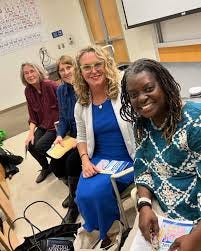
Iris: So the first version of the Sitting Room opened in 1981. I remember being a part of a workshop with poet, Terry Ehret at that first space! It was such a refuge! But you really only had 52 books to start with?
J.J.: You must realize that Zora Neale Hurston was not yet back in print. There were not a lot of books available by women in the 1980s. But we started receiving donations, and the library grew. It also helped that publishers started publishing women. Amazing Alta, in l976, published Ntozake Shange and Susan Griffin for the first time with her Shameless Hussy Press. In England, Virago Press, started in 1973 by Carmen Callil, began reprinting early novels by women, pre-Jane Austen (though I did have to point out to her that the covers all featured art by males). Dale Spender’s “Mothers of the Novel” project also helped to set the record straight.
The Sitting Room Library now has shelves of books by and about women artists which are well worth looking through. We even have a book titled “America’s Other Audubon,” where the artist, a woman, of course, painted the nests that Audubon had omitted from his paintings of dead birds.
Iris: That’s incredible, J.J. I’m not surprised that interviewing you inspires me for dozens more posts I could write about the women you are listing! In addition to having a library of over 7,000 titles, The Sitting Room also keeps files about women writers, and I am sure there are many lost voices to be found! Who is a woman writer you feel more people need to read? Why do you think she is important?
J.J.: Choosing one person from our list of 270 + authors in our archives who needs/cries out for attention is impossible. The names leap off the list, and the person I find myself choosing to recommend is NOT the writers for whom TSRL has such copious and unique (with personal letters, photos, etc.) archive files, such as Tillie Olsen and Meridel Le Sueur (and one of her daughters is still alive and living in Graton, CA). The name that comes to mind is instead the wonderful and under-sung Dori Sanders, whose cookbook is probably more read than her several unique and adorable novels, such as her best known, Clover (1990). Dori came to SSU from South Carolina to speak to us about the South she knows from her perspective, and we all fell in love and friendship with her, but alas, from all of that connection, there is NO archive at all. All the more reason to write on her, I am now declaiming (though wincing at so many other names clamoring to be heard). Come by for a gander at the archives if you are moved to retrieve a “lost lady,” please. You’d be so welcome – telephone 707 795-9028 or email boxcar@sonic.net to schedule a visit.
Iris: That’s fascinating! Are there any other treasures from The Sitting Room you want to bring to our attention?
J.J.: Here on the tea table is a charming game just sent to us by dear Jean Hegland (who certainly deserves an interview), put out by some British Libraries, challenging us to identify authors by their books’ first and last words –I wonder how many of them are by women?
There are so many other treats – and I am not talking tea and cookies, though they are always available here! For example, the exhibit wall is full of exquisite art by our local wonder, Patti Trimble, and some of her poetry books. And an exhibit of the late Etel Adnan’s many books + her paintings of Mount Tamalpais. There is a kind of altar to the late Alice Munro, with an archive file chock full of extra material on her. Indeed, our archives are unique, and I’ll use that word to sum up and, indeed, conclude this brief interview.
Iris: Thanks, J.J., for taking the time to speak with us and for creating such a beautiful space for us to use!
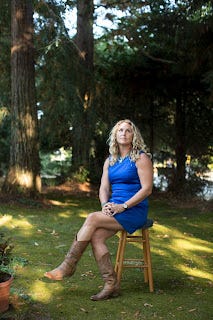
For more information about the Sitting Room visit sittingroomlibrary.org or the new Wikipedia page.
Search the Sitting Room’s online catalog.
Now Available for pre-order: Riding Like the Wind: The Life of Sanora Babb







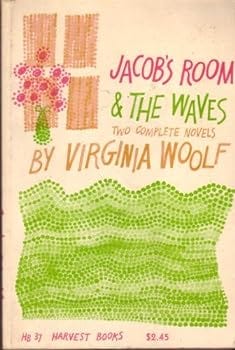

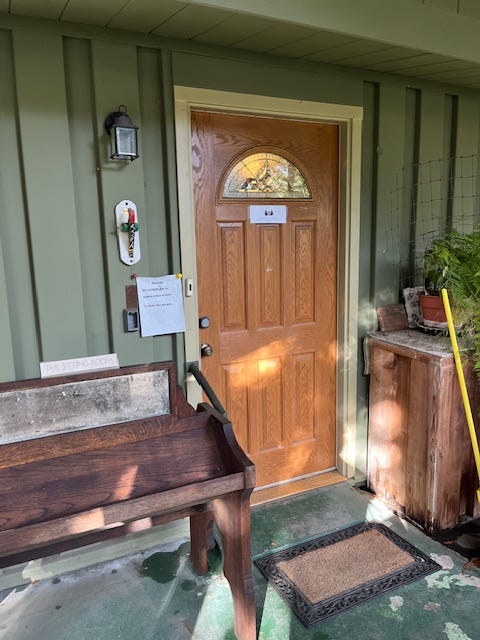

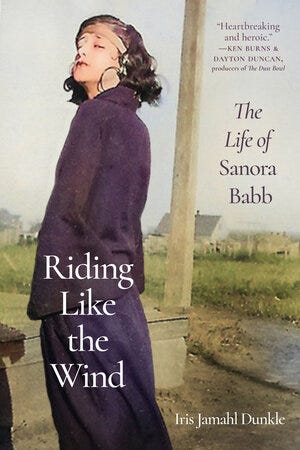
Please say hello to JJ...she was my teacher and mentor in my freshman year at Smith. Her brother Tom and I became friends. JJ inspired me to organize a voter registration campaign from Smith to NC; I think Tom (and maybe JJ) and I went to the Poor People's campaign together, though now Im not sure whether maybe it was different protest. Lisa Adamson, Lake George NY
Terrific piece! So glad you spotlighted J.J. and the Sitting Room. Inspirational and iconic in so many ways. I'm long overdue for a return visit....